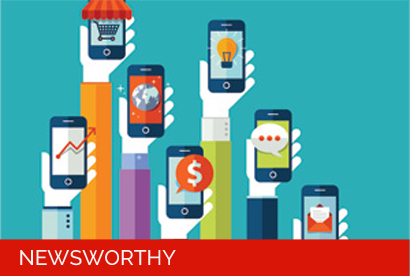All You Need To Know About In-App Marketing

There has been a change in the digital world. Consumers are now shifting away from the web to more flexible and personalized experiences that apps can uniquely deliver.
Think about these fresh statistics:
- 1 in 5 people in the world own a smartphone
- The amount of time people spend using apps has increased by 21% in the last year alone
- 85% of people prefer native apps to websites
- In the US, time spent on mobile apps now exceeds the time spent accessing the web from a desktop computer
This migration of people away from websites to apps demands a change in the way marketers connect with their consumers. It’s time to adopt a new mindset: Mobile-First. It’s time to embrace App Marketing.
Fundamentally, there are two “buckets” of app marketing:
1. Advertising to people on third-party apps and websites in an effort to acquire new users.
2. App marketing that aims to drive more revenue and engagement from the people who already use your app.
Both of these buckets are exceedingly important in marketing your app. But while mobile ads and acquisition campaigns drive new users, once you have users, you need to know how to keep them. This is where the second bucket of app marketing comes in.
Most businesses wouldn’t call a one-time purchase a “win,” so when it comes to your app, why stop after the download? Gaining a new user signals that you’ve gotten their attention. Now you need to prove your app is worth opening again and again. You need to employ In-app marketing that keeps your users engaged.
What is In-App Marketing?
In-app marketing involves messages or notifications displayed, while the user is active within the app itself, that create a structured nurturing process and prolong session time. This form of messaging is highly contextual and analytical, and can be activated based on user interactions.
Because of its customized style, In-app messaging is better at delivering based on user context and expectations. In-app messaging should feel like a natural part of the app, not additional marketing, and can be used by marketers to fine-tune app content or promotional strategy.
Secondly, the user is already engaged with your app. Because you can trigger in-app messages after an event, it allows you to interact with your current users at a more individual level. While you see it as a targeted marketing strategy, your user sees it as an idea, offer or suggestion relevant to their app interests.
For example, sending a push notification to a user’s home screen asking them to take a survey gives them no valid reason to respond. You have the actionable language, but haven’t offered them any real value. How about sending this same request to your users through an in-app message after they’ve just purchased an item?
One of the best In-app use cases is for mCommerce; identifying when users are most likely to buy and delivering promotional In-app offers at the optimal time. In-app marketing also allows for prolonged experimentation to see what the users connect with the most.
On the whole, the future of In-App Marketing looks bright as at the end, it’s all about keeping your user-base happy and connected with the brand.
OUR PREVIOUS EDITIONS >>



